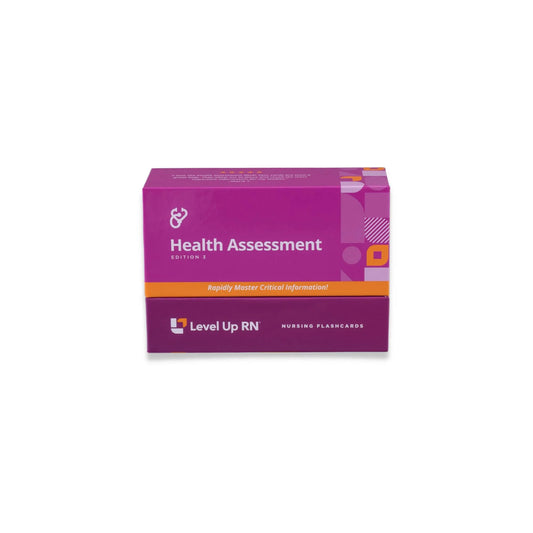Number, name, type, function, and assessment of cranial nerves XI (spinal accessory) and XII (hypoglossal).
Health Assessment, part 29: Cranial Nerve XI - Spinal Accessory & Cranial Nerve XII - Hypoglossal
Full Transcript: Health Assessment, part 29: Cranial Nerve XI - Spinal Accessory & Cranial Nerve XII - Hypoglossal
Full Transcript: Health Assessment, part 29: Cranial Nerve XI - Spinal Accessory & Cranial Nerve XII - Hypoglossal
Hi. I'm Meris. And in this video, we are going to be talking about the type, function, and assessment of cranial nerves 11, spinal accessory, and 12, hypoglossal. I'm going to be following along with our health assessment flashcards. These are available on our website, leveluprn.com, if you want to grab a set for yourself. Or if you are more of a fan of digital products, I would invite you to check out Flashables, the digital version of all of our flashcards. All right. Let's go ahead and get started.
So first up, we are talking about cranial nerve number 11. This one is known as spinal accessory, or you may hear some people simply refer to this as the accessory nerve. Either one is correct. And this is a motor neuron, so it has no sensory function. This cranial nerve is responsible for the movement of the sternocleidomastoid muscles right here, which are responsible for turning of the head. And they are also responsible for the motor function of the trapezius muscles, which are the muscles here in the upper back, which control shoulder shrugging.
So how do we assess this nerve? Well, one of the ways that we can assess is by having the patient turn their head against resistance, meaning that, as the nurse, I would put my hand up to provide some resistance. And what I want to feel is that my patient is able to overcome that resistance and that they have equal strength on both sides so that it is strong and equal bilaterally. The other way that I can assess the motor function of this nerve is to have my patients shrug their shoulders against resistance. So again, that's going to be placing my hands here to provide downward resistance and have my patients shrug their shoulders against them. Again, what I am expecting to find here is going to be a strong and equal movement on both sides of the shoulders.
Now, this is not an official hint that we have. This is just something that I use to remember this, so I want to pass it along in case it's helpful. This is cranial nerve number 11. One, one. So I always think about the arms as being ones because they're straight, so a one and a one. And I think about that as being one of the assessments for cranial nerve 11, the two ones that go up and down. Just don't forget that we do assess about the head turning against resistance as well.
Lastly, our final cranial nerve that we're going to be wrapping up here today is cranial nerve 12, hypoglossal. Hypo meaning below and glosso meaning tongue. So hypoglossal nerve is going to be innervated at the level below the tongue. Now, this is also a motor neuron. And as you may have guessed, it is responsible for tongue movement, glosso, tongue. So how do we assess it? We're going to have our patients stick their tongue out and move it side to side. It's that easy. We're going to make sure that they are able to move their tongue the way that they're supposed to.
So that is it for assessing cranial nerves 11 and 12, spinal accessory and hypoglossal. I'm so glad you stayed until the end because I'm going to give you some quiz questions to test your knowledge of key facts I provided in this video. The motor function of cranial nerve 11 involves which muscles? Sternocleidomastoid and trapezius. How should the nurse assess the function of cranial nerve 12? Have the patient stick out their tongue and move it side to side.
All right. That is it for this video. I hope you found this review to be useful. Thanks so much, and happy studying.


